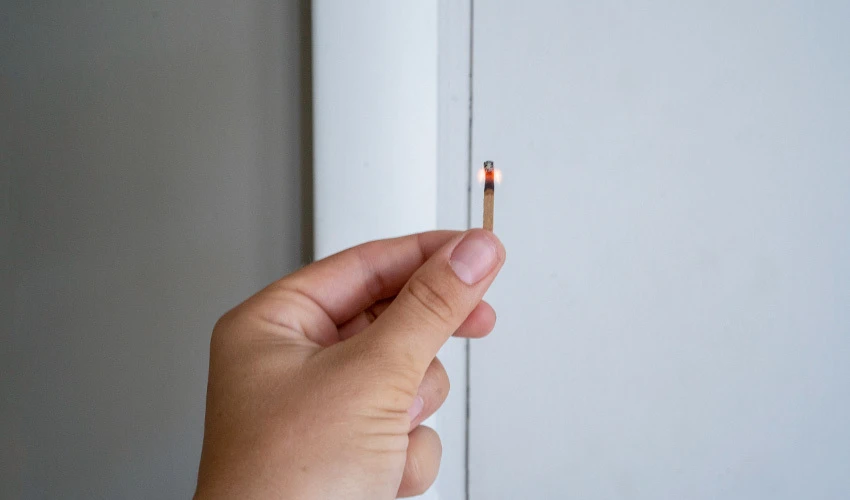How to Find Air Leaks in Your Home

Who doesn’t want lower energy costs? Air leaks in houses equate to energy loss and, therefore, higher heating and cooling bills. Understanding, locating and sealing air leaks in your home you can save some serious money. Read on to learn how to identify and fix air leaks in your home.
Quick Ways to Detect Air Leaks in Houses
There are a few signs that your house may be leaking air. The most obvious is a higher energy bill. Compare your utility bill (gas and electric) to the same period a year ago. Is it substantially higher this year? Your home may have a new air leak.
Other signs of newly developed air leaks include a suddenly drafty home, hot and cold rooms, and even excessive dust.
If this is the case, check your home for siding damage, window damage, or roof damage.
Troubleshooting Air Leaks in Your Home
Air leaks occur most commonly around windows and doors, the top of basement walls, chimneys, recessed lights, plumbing vents, wiring holes in the wall, and ceiling hatches for your attic.
Luckily, there are three inexpensive ways to locate leaks of all sizes:
- The flashlight test.
Wait for nighttime and turn off all the lights in the room. Ask a friend or family member to go outside and stand facing the suspected leak. Then shine your flashlight from the inside. If your friend can see the light coming through the house, you probably have a large leak. - The paper test.
Stick a piece of paper or dollar bill into the frame of your window or door. Close it and see if you can easily pull the paper out. If the paper is easily removed, you have an air leak. - The manual inspection.
Wait for an extremely hot or cold day. Inspect all the seams in your home. Don’t forget the outside of the structure. For best results, dampen your hands with water to make it easier to feel a change in temperature. If you can feel a sudden drop or rise in temperature near a seam, you may have just found an air leak.
How to Seal Air Leaks
Have no fear—there is a sealing solution for every leak! Once you’ve figured out where your home is leaking air, take action.
Check out these quick tips for sealing home air leaks.
- Doors and windows: Use caulk and weather stripping. Depending on the location and shape of the door or window frame gap, you can choose between V-strip, felt, foam, rubber, and metal weather strips. Use a caulking gun for small areas. For a less permanent option, try rope caulk.
- Attic and crawlspaces: It’s a chore, but you really do need to properly insulate your attic and crawlspaces. One easy diagnostic tool is a ruler. If you have fewer than ten inches of insulation, pad it with layers of cellulose or fiberglass insulation from your local hardware store. And, of course, apply and duct wrap to any HVAC ducts.
- Basements: To insulate large gaps (half an inch or wider) between the house framing and the foundation, try a can of polyurethane insulation foam. The foam expands to tightly fill large gaps. Fill small gaps with silicone or latex caulk. Always use heat-resistant caulk around your furnace or water heater vents.
Service Your HVAC to Cut Energy Costs
Your increased energy costs may be contributed to aging or damaged appliances. Once you’ve located and sealed any obvious air leaks in your home, have your HVAC system professionally serviced. The professionals at Aire Serv® will make sure your furnace and air conditioner systems are running at optimum efficiency. Call or request an appointment online to get started, and Breathe Easy.
 Click to call
Click to call


